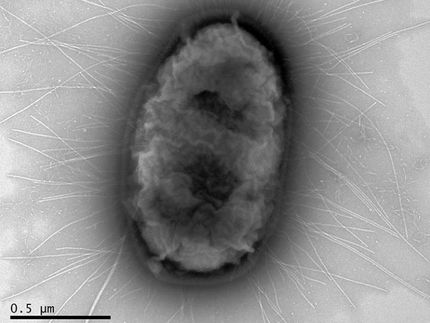Antibiotic resistance flourishes in freshwater systems
Researchers discover resistance in freshwater systems throughout Ontario
The author Dr. Seuss may have been on to something when he imagined that microscopic communities could live and flourish on small specs of dust, barely visible to the naked eye. In fact, such vibrant communities exist – in a material with a Seussical sounding, yet scientific name called 'floc'.
McMaster University researchers have now discovered that floc – "goo-like" substances that occur suspended in water and that host large communities of bacteria – also contain high levels of antibiotic resistance.
"This has important public health implications because the more antibiotic resistance there is, the less effective our antibiotic arsenal is against infectious diseases," said Lesley Warren, the principal investigator for the study that looked at floc in different freshwater systems.
The research was led by Warren, professor of earth sciences and Gerry Wright, scientific director of the Michael G. DeGroote Institute for Infectious Disease Research, both of McMaster, along with Ian Droppo, a research scientist at Environment Canada.
They examined floc collected from Hamilton Harbour, which is impacted by sewer overflow; Sunnyside Beach in Toronto, which is impacted by wastewater; a rural stream near Guelph, impacted by light agricultural activities; and a remote lake in a natural preserve area in Algonquin Park, accessible only by float plane.
Researchers analyzed the water and floc samples for trace element concentrations and the presence of 54 antibiotic resistant genes.
They were surprised to discover that genes encoding resistance to clinically relevant antibiotics were present in floc bacteria at all four sites, although resistance varied in intensity based on human influence. That is, there was less antibiotic resistance detectable from Algonquin Lake compared to Hamilton Harbour, which harbored the highest concentration of floc trace elements.
"What this tells us is that antibiotic resistance is widespread in aquatic environments ranging from heavily impacted urban sites to remote areas," said Warren. "Yet, it also demonstrates that areas with greater human impact are important reservoirs for clinically important antibiotic resistance.
Floc are vibrant microbial communities that attract contaminants such as trace metals that are markers of resistance, Wright said.
Warren added the study of antibiotic resistance in floc has never been done, "and we are only scratching the surface. The presence of environmental bacterial communities in aquatic environments represents a significant, largely unknown source of antibiotic resistance," she said. "The better we understand what is out there, the better we can develop policies to safeguard human health as best we can."
Most read news
Topics
Organizations
Other news from the department science

Get the life science industry in your inbox
By submitting this form you agree that LUMITOS AG will send you the newsletter(s) selected above by email. Your data will not be passed on to third parties. Your data will be stored and processed in accordance with our data protection regulations. LUMITOS may contact you by email for the purpose of advertising or market and opinion surveys. You can revoke your consent at any time without giving reasons to LUMITOS AG, Ernst-Augustin-Str. 2, 12489 Berlin, Germany or by e-mail at revoke@lumitos.com with effect for the future. In addition, each email contains a link to unsubscribe from the corresponding newsletter.





















































